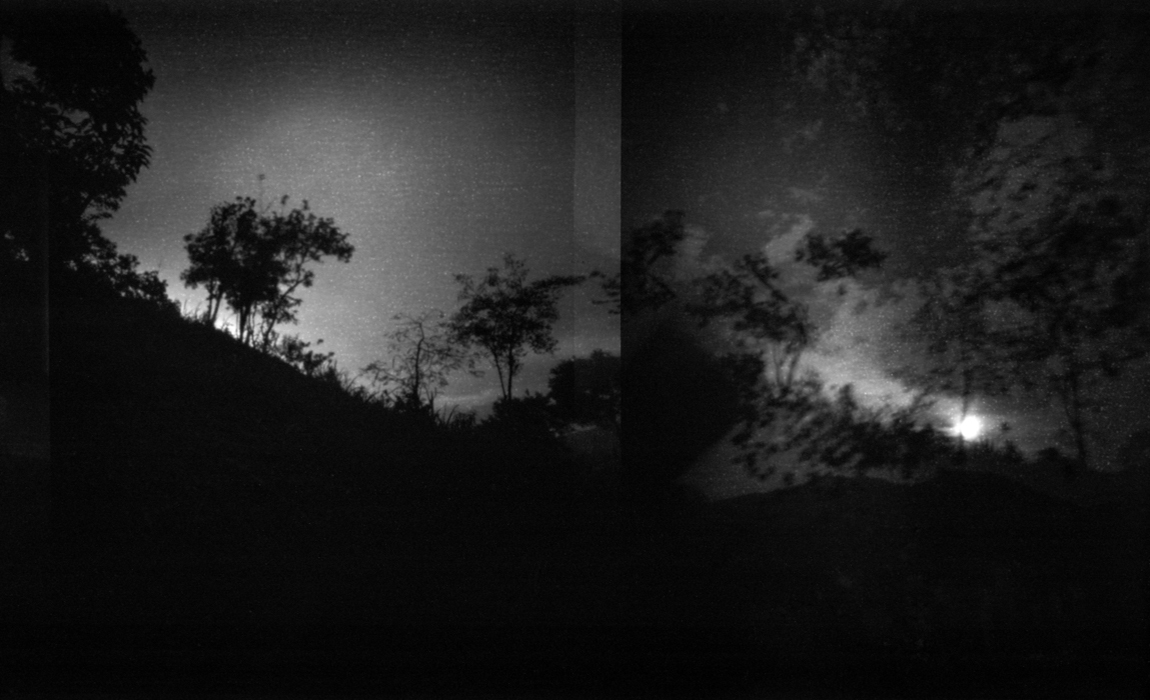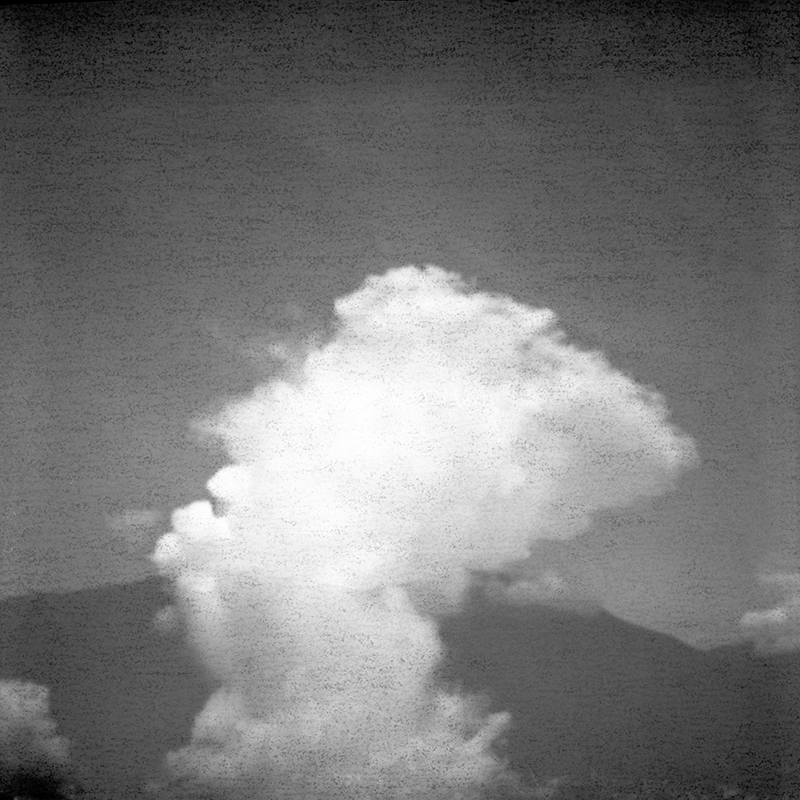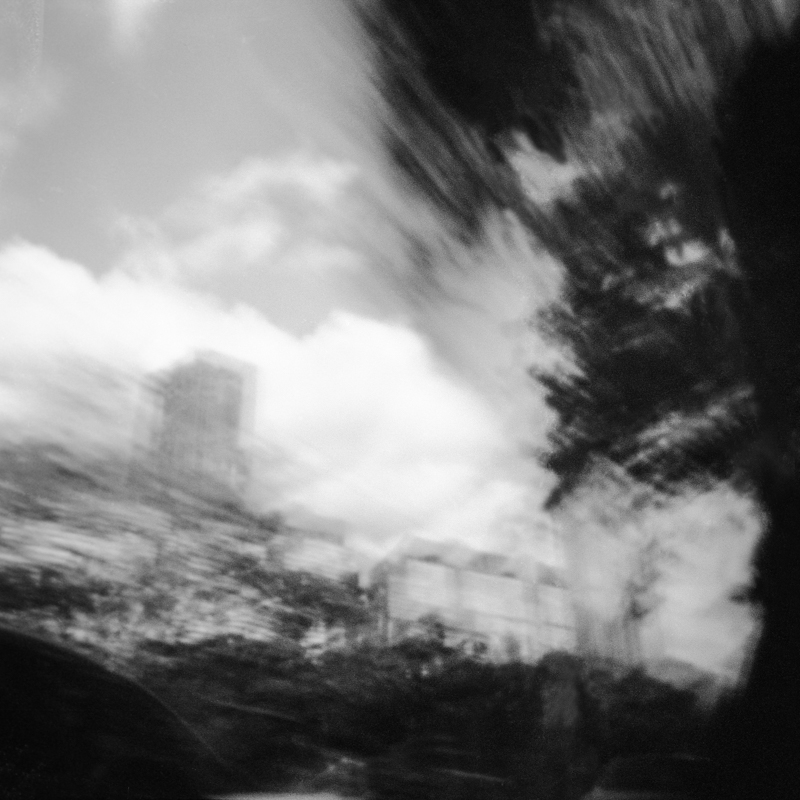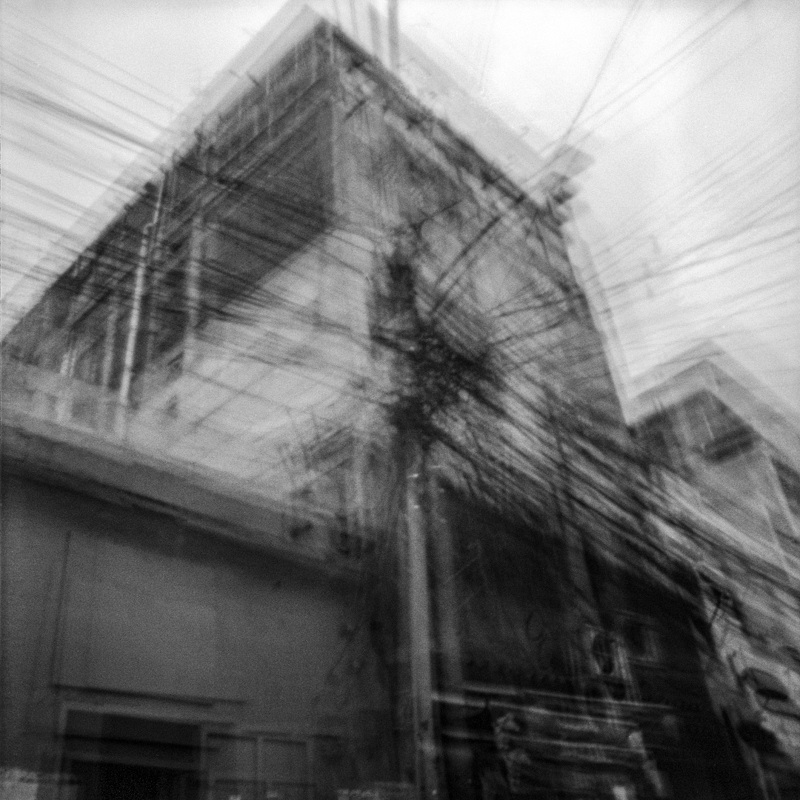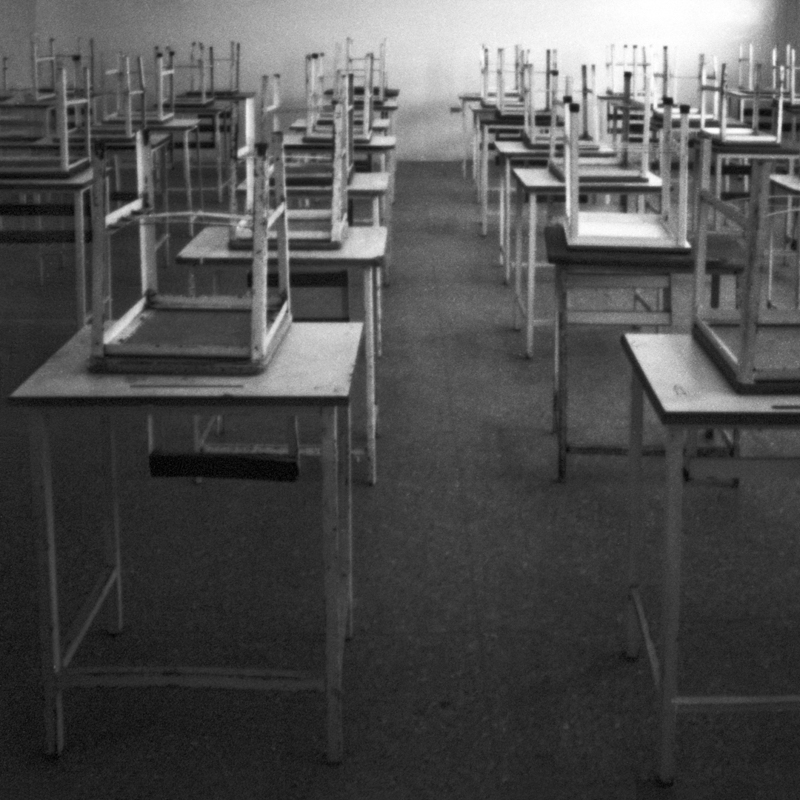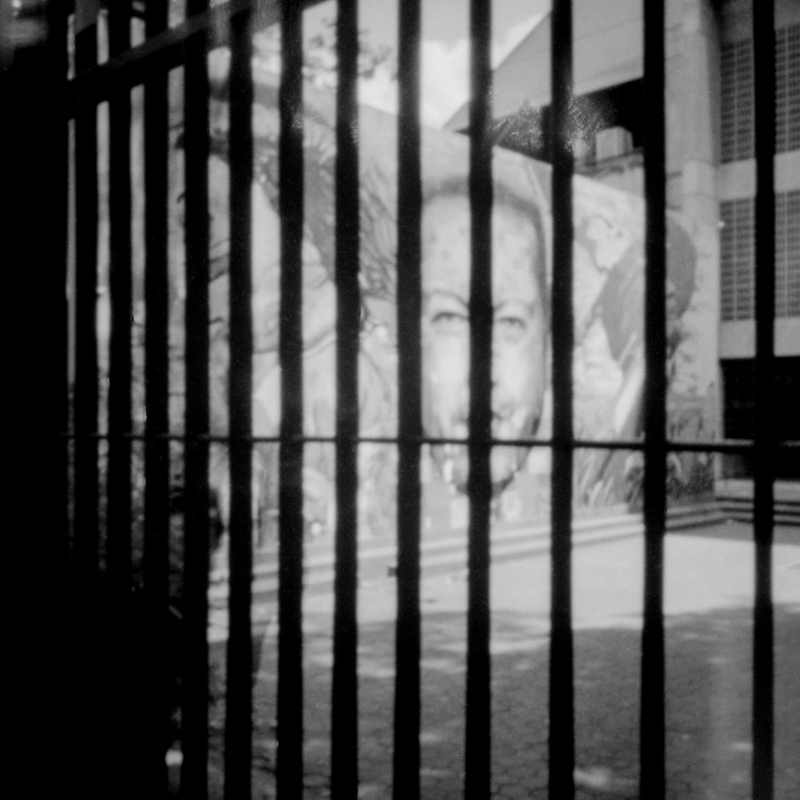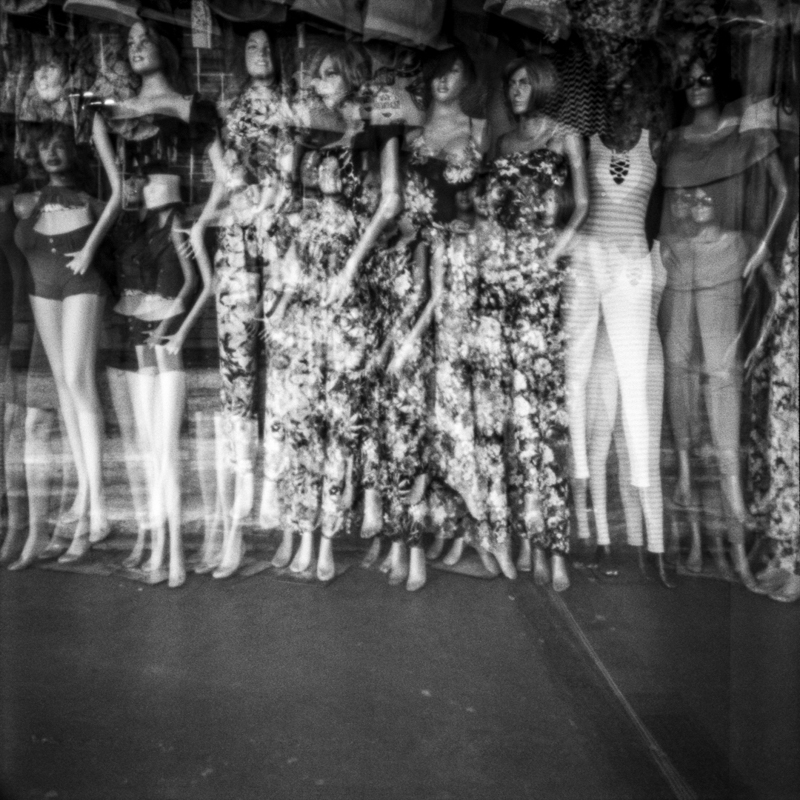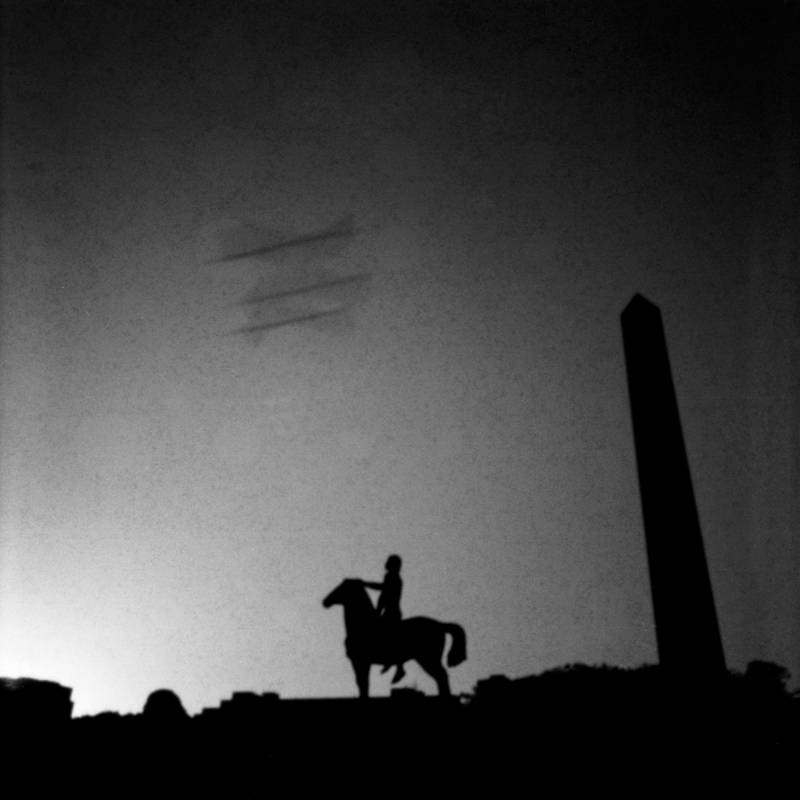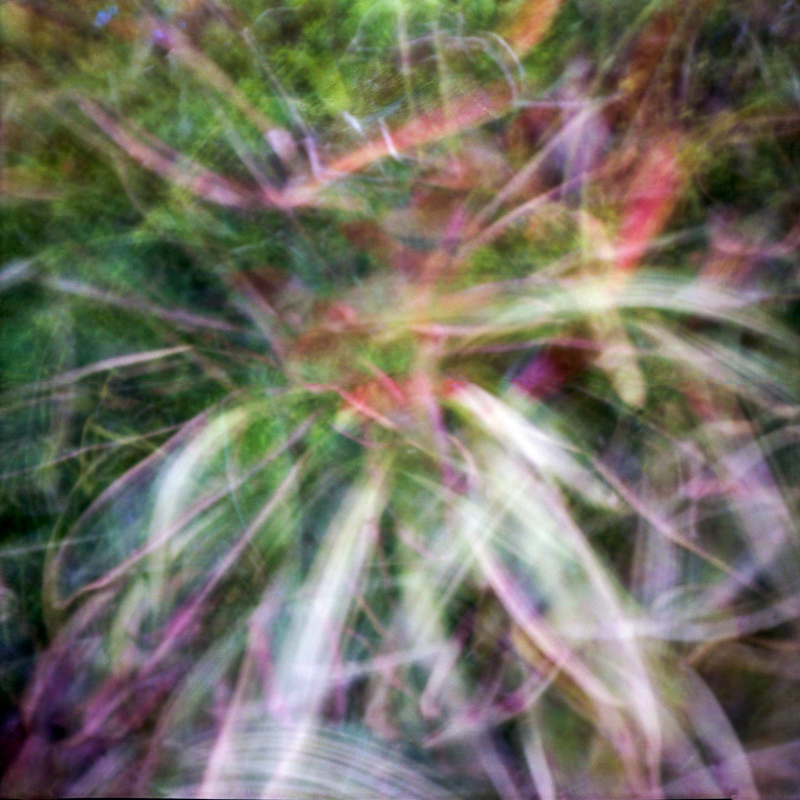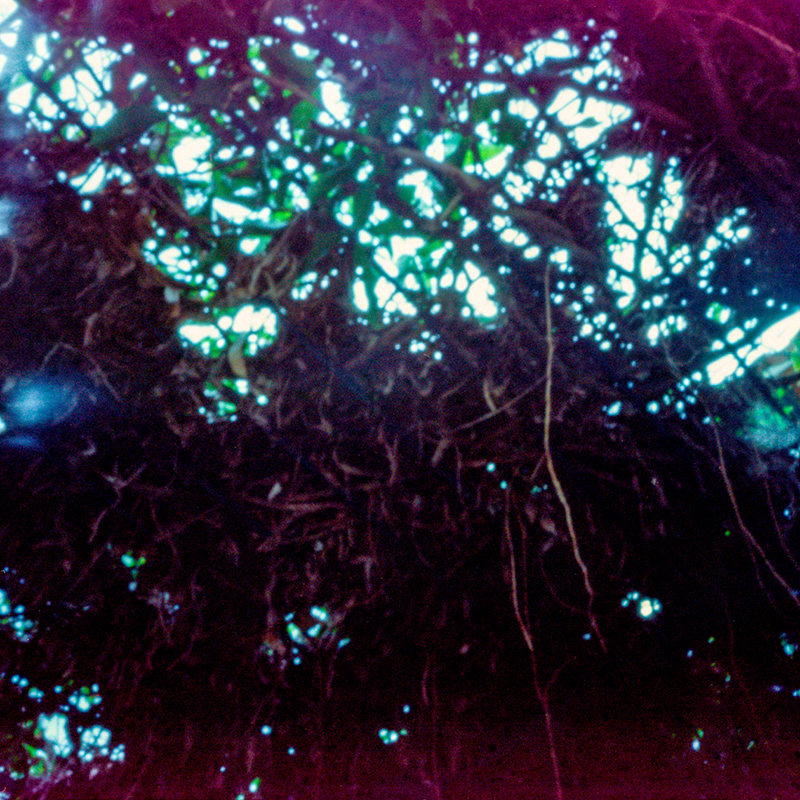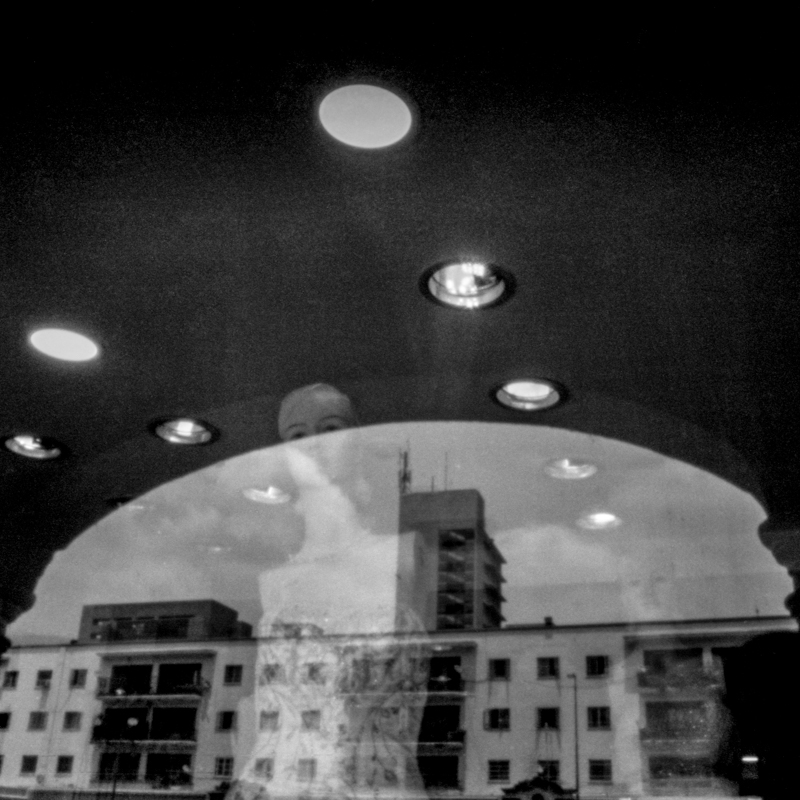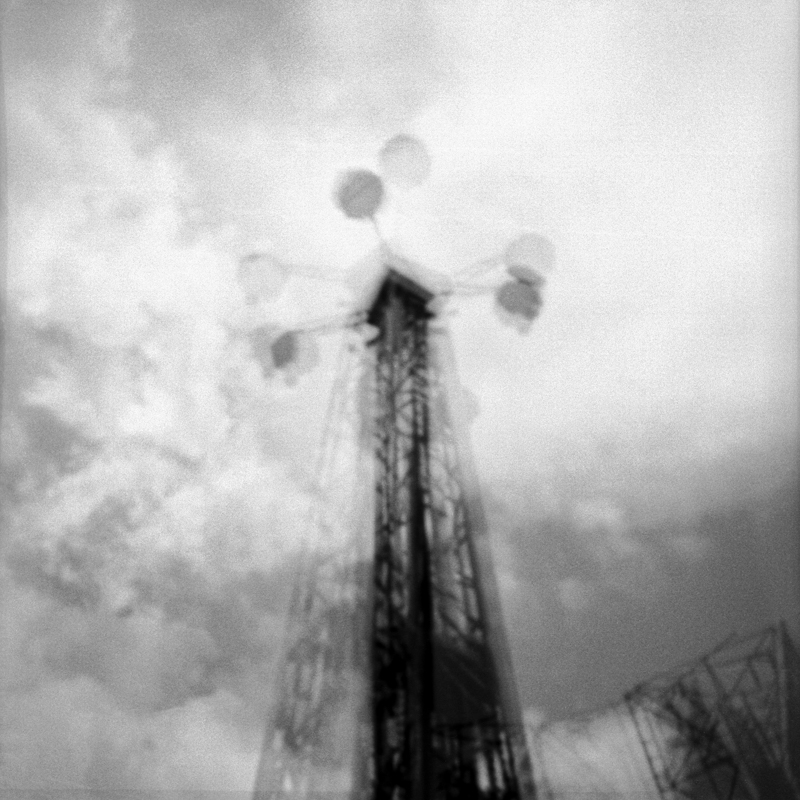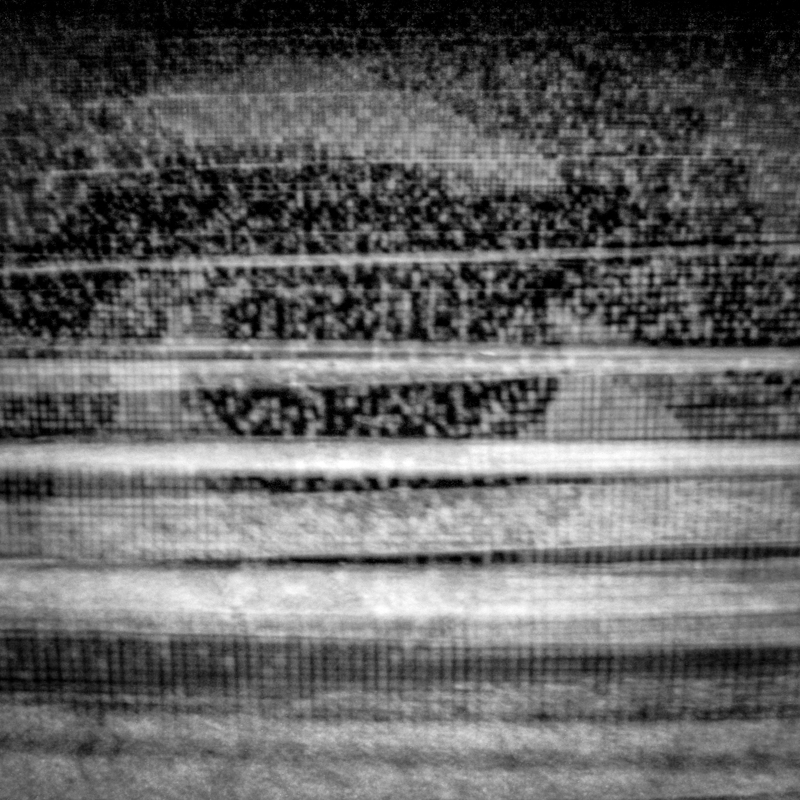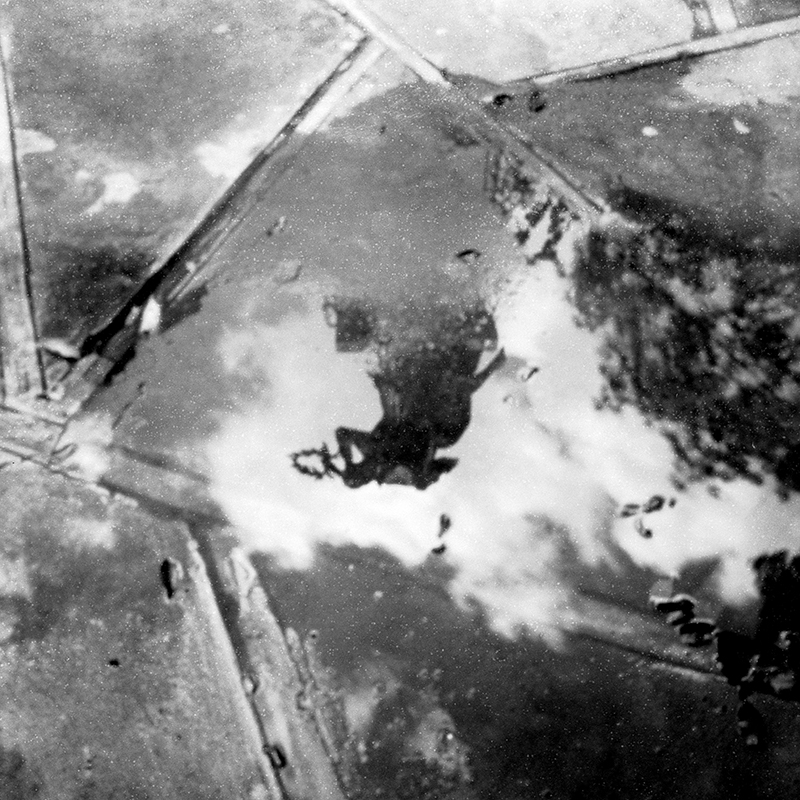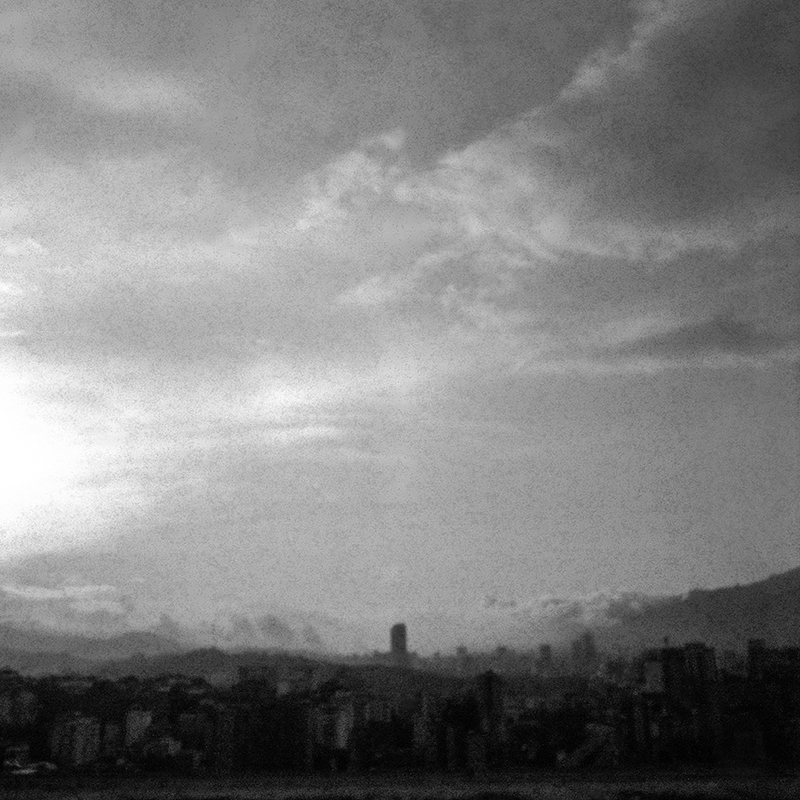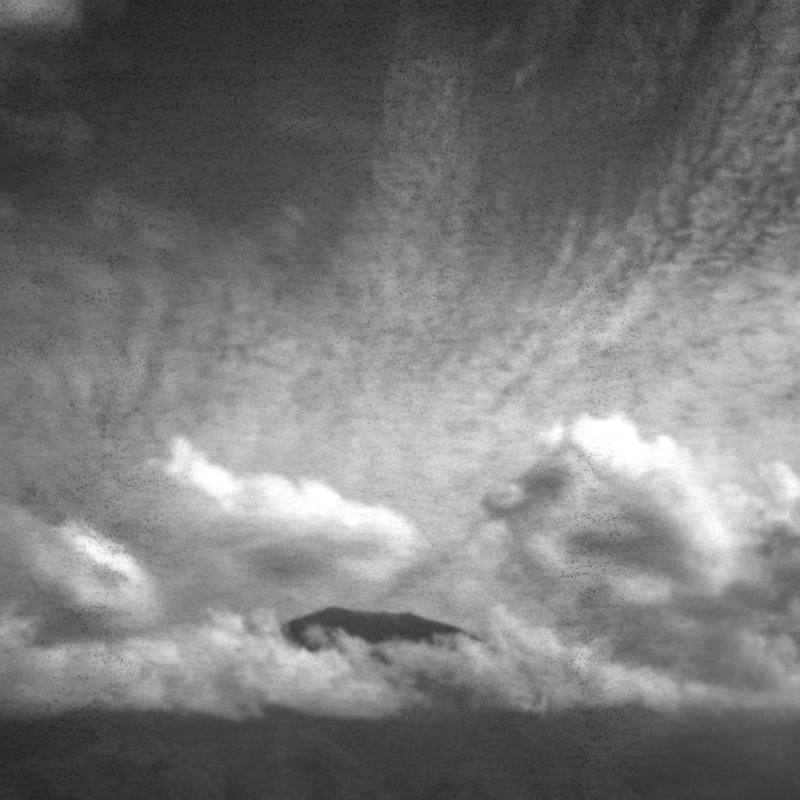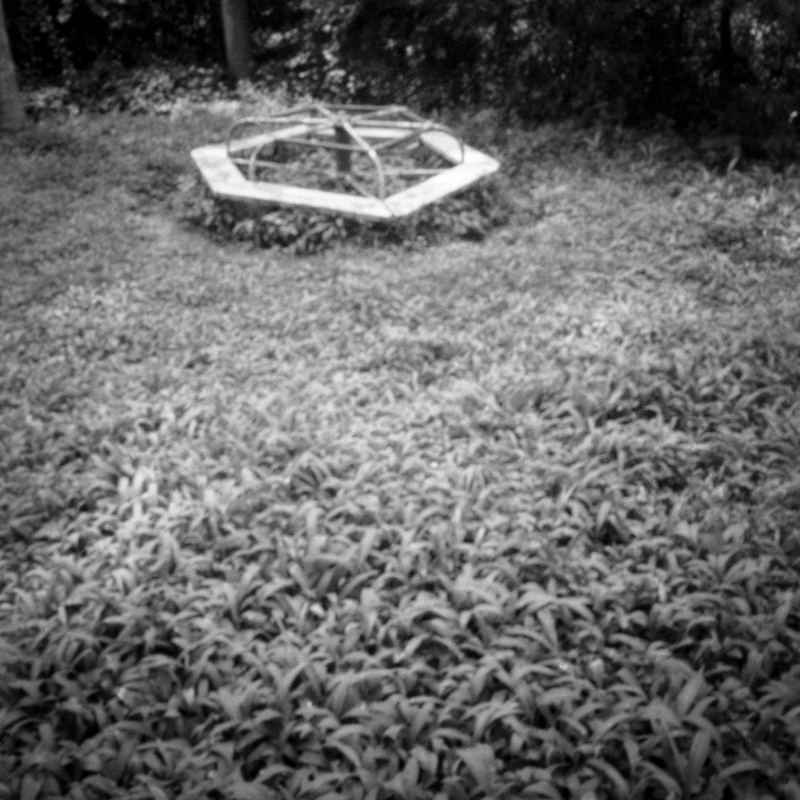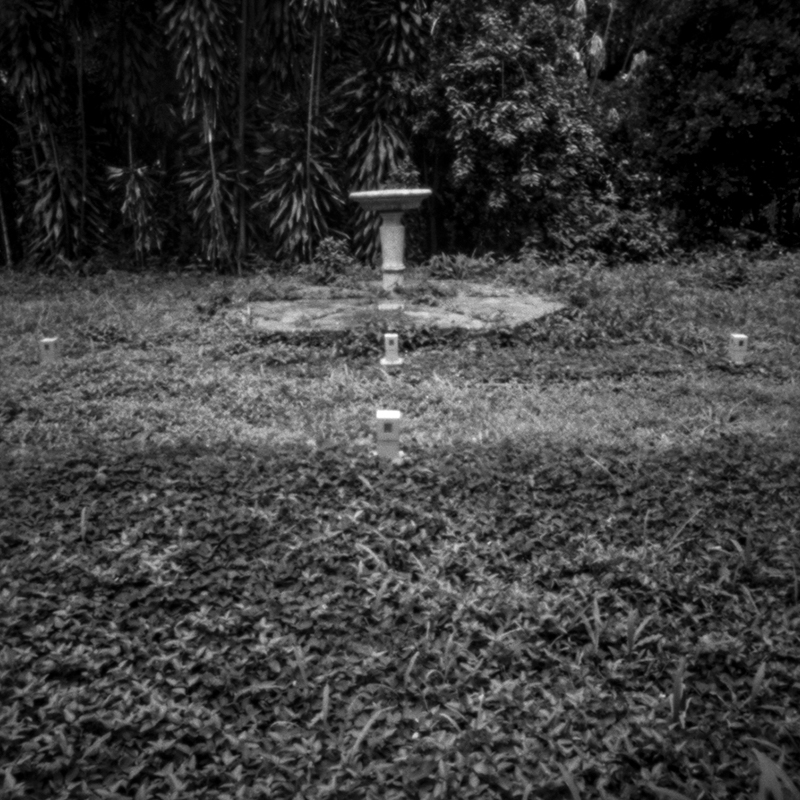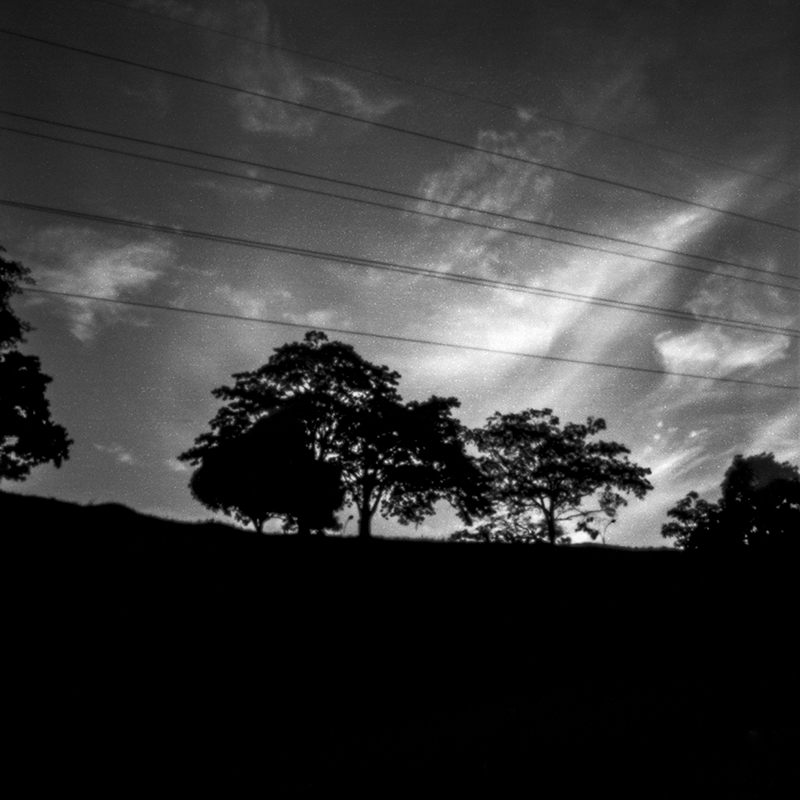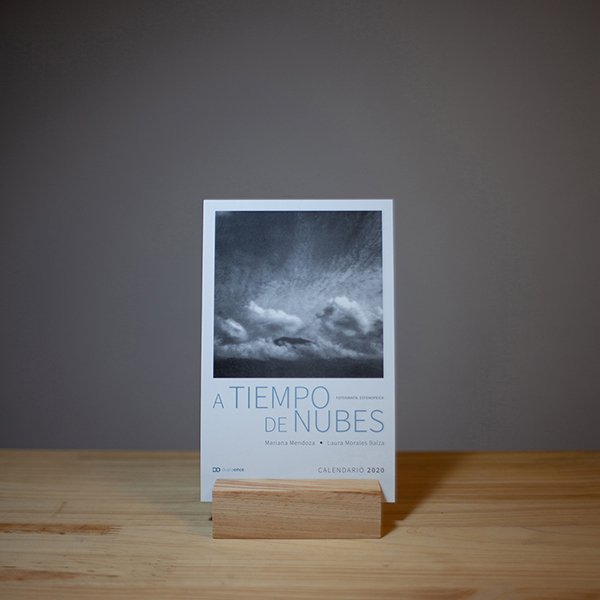A collaborative pinhole photography project committed to the investigation and visual memory of the city of Caracas
VII (Proyecto Creadoras)
CAF —Banco de Desarrollo de América Latina—, Volante Studio and GBGArts, announced on October 27, 2022 the open call for CREADORAS Contemporary Art Contest. A contest aimed at Venezuelan artists to highlight and make visible the creative work of women artists and the value of her production in the context of the visual arts of Venezuela.
Our work was selected along with 91 artists, and received a Special Mention (of the seven mentions awarded) in the category of Visual Arts.
The exhibition UNA = TODAS, is curated by Lorena González Inneco and the museography by Matilde Sánchez.
Inaugurated on June 8, 2023, at the National Art Gallery, Temporary Room, 2nd floor. Avenida México, Caracas, Venezuela.
VI (SHOTS Magazine)
A selection of our work Caracas: truth and fiction, has been published in SHOTS magazine, a quarterly publication dedicated to black and white photography, which in a world that has become a digital experience, it is not an on-line publication.
The edition corresponds to number 155 (Portfolio / Collaborations) published by Douglas Beasley and edited by Elizabeth Flinsch.
The publication brings together 17 projects by different authors: Al Brydon (Sheffield, Reino Unido), Karoline Schneider & Ella Moe (Berlín, Alemania), Bastien Anguiano & Alice Marie Brigitte (Mazilly, Francia) y J.M. Golding (Walnut Creek, California) among others.
Caracas: verdad y ficción | DuplaOnce | Mariana Mendoza / Laura Morales Balza
Shots Magazine. Issue Nº 155 : Spring 2022 : Portfolio Collaborations, pp.40-43
ISSN 1048-793X; Publicación Nº 004-754. Printed in the USA.
To request copies:
shotsmag.com
2370 Hendon Avenue
Saint Paul, MN 55108-1453
V
IV
III
Caracas: truth and fiction
“That emptiness that serves as a place”
Michel Foucault
“I take possession of this land, in the name of God and the King,” Diego de Losada declared when he founded the city of Caracas, on July 25th, 1567, describing it as he got to know it then:
“The city of Caracas has a location with such a heavenly character that, without competition, it is the best of all that America possesses. It seems spring chose it as its permanent dwelling, for, since it remains in the same temperance all the year, neither cold bothers, nor heat annoys. Its waters are many, clear and thin, because the four rivers that sufficiently surround it offer their crystals, for, without yet recognizing any heat of the summer, in the greater intensity of the heatwave they maintain their freshness.” *
The city we photograph is so far from Diego de Losada’s description. In the abyss of such a distance it is, at the same time, a sky of that sky, water of that water, a river of that river and, every day, a mountain of the same mountain.
We stare at these appearances from the narrow hole of a pinhole camera. We are sheltered by its dark emptiness, its austere constitution —still an artifact— by the absence of optics and the demand for a lengthened time, longer than it is needed with a conventional camera. This extended time entails a greater contemplation, and then it is possible to get a halted pulse where we can truly be. The consequences of using this resource have been fundamental for our choosing it, but our commitment is not related to its technical aspect, but to the photographic fact, which returns in an image as culture, as language and as a trace. A sensitive making of where it is possible to grasp what is real of our city as a pure thought, without losing its reality as a fact, its expression, its appearance.
We do not try to catch the trace of the disappearing city, nor do we try to replace the already evaporated city with poignant images of a reality in constant combustion. We approach the urban space from our immediate time, and also from our personal and civic memory. Intermediaries, dialogical and aware of the impossibility of photography to reflect the world, but having the capacity of showing it as we perceive it in a specific time frame that, besides, is mutant.
We know that it is not possible to restore the everyday city we long for, or that city we do not know still —the city of tomorrow, the one that has not yet arrived— because our glance and those resources we use take place according to the human sense that makes up both, our need and our desire. We photograph something that exists: in its beauty, its horror, its vitality and its decline.
Sometimes, images return with a hidden thought, like that creation that follows destruction or death. We amaze at the autonomy and mystery of those sparkling and illuminating metaphors that cover of dawn, though briefly, the night that has already devoured us. That daily and atrocious violence that shares the landscape with us is not secret, but we are grateful for the redeeming possibility of the image to relieve us in its occurrence.
We find space in that disappearance, far from geographical or bonding exercises. We do not move from north to south, or from east to west. We move from mountain to darkness, from architecture to religion, from people to forest, from clouds to branches. “So heavenly”. So luminous.
Laura Morales Balza
* Carmen Clemente Travieso. Las esquinas de Caracas (2001). Caracas: Editorial CEC, SA. Los Libros de El Nacional.
II
On November the twentieth-ninth of the year two thousand eighteen, we came across the breeze and the light of Los Caobos Park, one of the oldest parks in Caracas. This was our first destination. It was around Ernest Maragall’s group of sculptures that a journey began, which allowed us to look in all directions: sky, shadow, river, mountain, plaza, rain, frond, birds, fence, cement, noise.
A tiempo de nubes brings together a selection of thirteen pinhole photographs that are part of a group of forty-seven images presented in different products. We do not try to capture the trace of that city that is disappearing, nor to replace that already evaporated city with grieving images of a reality that is in constant combustion. We not only approach its urban space from our immediate time, but also from our personal and civic recollections.
I
“It is inside us that landscapes have landscapes”
Fernando Pessoa
Book of disquiet
Regardless of the fact that reflecting and deciding on the use of certain tools was something fundamental for us, the core of our initial approaches to our subject —the city we inhabit— had to do with our intention of placing its representation into poetry. This was not just about an aesthetic decision, rather about a resource that could make it possible to also have space for the sparkle, the peacefulness and the concurrence inside the dimness, unrest and violence of the present time. In Caracas, our first landscape is a visual, emotional and intellectual record assembled along spaces that are essential to us, spaces that shape us, and that we needed to reconstruct. In many situations, it is inside us that such city is a city. We attend its landscape quietly, and far from any predatory, devouring visual intention. On the contrary, we go there speechless, seeking the delay, forcing time and briefness, facing a landscape that always shows itself unreservedly.
Publications
Exhibitions
Mariana Mendoza
Venezuelan medical doctor and photographer. She studied photography at Roberto Mata Taller de Fotografía, the Nelson Garrido Organization, at the CIEF (Center of Photographic Studies), in Caracas, Venezuela, at the International Center of Photography in New York City, at La Luz Workshops and at La Máquina Escuela de Fotografía based in Madrid, Spain. Her research-focused work deals with narratives documenting the collective. She has worked on different series that address both the landscape and the human figure, through the construction of images of nature, towns and their inhabitants, representing their identities and affectionsIn 2016, she was awarded First Prize, category: Series, in the II National Photography Awards organized by the European Union Delegation in Venezuela (Woman, Man: Gender Equality). In 2017, she won the Second Prize, category: Series, in the III National Photography Awards organized by the European Union Delegation in Venezuela (Social Inclusion). In 2020, her series This is the esplanade we stroll was selected for the Artist/Mother Podcast Juried Group Exhibition: You are not wonderful just because you are a mother. In 2022, she won First Prize, in the category: Documental Portrait in The Woman I will become award organized by Alternos and Photouno. Photolucida Critical Mass 2022 Finalist.
Her photographic series Las Cuidadoras de Caracas (Caracas Caregivers), which shows insight into the lives of individuals who care for people with disabilities, now belongs to the private collection of the Urban Photography Archive Institution, a foundation dedicated to the preservation, registration, research and diffusion of the Venezuelan visual memory. In her work, she looks to show how caregivers are often invisible in our society and lack the recognition they deserve. A selection of this series is part of the exhibition “Towards a History of the Gaze: The Portrait in the Urban Photography Archive Collection”.
Cofounder of DuplaOnce, a collaborative pinhole photography project committed to the investigation and visual memory of the city of Caracas.
Mariana currently lives and works in Caracas, Venezuela.
@marianamendozam
@duplaonce
www.marianamendoza.com
__
Exhibitions
Estudios Independientes, Vienal 2024. Biblioteca de Santiago, (Santiago de Chile, Chile) 2024
In this house I don’t see the sky, group exhibition The Woman I will Become. Blue Gallery, New York, NY 2022
En esta casa no miro el cielo (In this house I don’t see the sky), group exhibition La mujer en la que me convertiré (The Woman I will Become). La Caja, Centro Cultural Chacao (Caracas, Venezuela) 2022
This is the esplanade we stroll, Artist/Mother Podcast Juried Group Exhibition: You are not wonderful just because you are a mother (virtual) 2020
Inside, the core of the essence, group exhibition Tiempos de Espera, iluminaciones contra la marea. GBG Arts (Caracas, Venezuela) 2020
Las cuidadoras de Caracas (Caracas Caregivers), group exhibition Towards a History of the Gaze: The portrait in the Urban Photography Archive Collection. Sala Mendoza, Universidad Metropolitana (Caracas, Venezuela) 2019
One out of three, III European Union National Photography Awards. Group exhibition Social Inclusion. Roberto Mata Taller de Fotografía, Hacienda La Trinidad Parque Cultural (Caracas, Venezuela) 2017
Circumstances, group exhibition Hatillo 0,1mm. Roberto Mata Taller de Fotografía, Hacienda La Trinidad Parque Cultural (Caracas, Venezuela) 2017
One out of three, III European Union National Photography Awards. Group exhibition Social Inclusion. Trasnocho Cultural, Patio de Los Espejos (Caracas, Venezuela) 2017
Las cuidadoras de Caracas (Caracas Caregivers), II European Union National Photography Awards. First Prize, category: Series. Roberto Mata Taller de Fotografía, sala de exposiciones (Caracas, Venezuela) 2016
Las cuidadoras de Caracas (Caracas Caregivers). II European Union National Photography Awards. Group exhibition Woman, Man: Gender Equality. Trasnocho Cultural, Patio de Los Espejos (Caracas, Venezuela) 2016

Laura Morales Balza
(Mérida, Venezuela) Editorial graphic designer and photographer. She studied photography at «Roberto Mata Taller de Fotografía», at the NGO Nelson Garrido Organization (Caracas, Venezuela) and at La Máquina Escuela de Fotografía, based in Madrid, Spain. She was a member of the Cádiz: explorando tu propia mirada (Cádiz: exploring your own gaze workshop, Cádiz, Spain), with Alex Webb, photographer of the Magnum Agency, and Rebecca Norris Webb. She also has participated in the following workshops: El retrato y la edición (The portrait and the edition, Barcelona, Spain), held by Antonin Kratochvil; Elogio de la sombra (Praising the shadow), a workshop on pinhole photography, with Luca Pagliari at the Roberto Mata Taller de Fotografía, and Terminar lo inconcluso (Finishing the unfinished), with Ricardo Armas, at Cubo 7 (Caracas, Venezuela). Her work has been awarded in different confrontations of art. She was awarded an honorable mention for her photograph Agua sin milagro (No Miracle Water), at the XII Alejandro Otero Art Award (2008), as well as an honorable mention for her triptych Fe heredada (Inherited faith), at the award «Venezuelan Photography Prize Goethe Institute», in its 2nd edition, which was held at the Caracas Photography National Center. She is a teacher at the Photography Investigations Center CIEF (Metropolitan University, Caracas) and at NGO Nelson Garrido Organization.
Co-founder of DuplaOnce, collaborative pinhole photography project committed to the investigation and visual memory of the city of Caracas.
Laura currently lives and works in Caracas, Venezuela.
@auraldelmoral
@duplaonce
www.duplaonce.com
__
Solo Exhibitions
Caracas asintomática (Asymptomatic Caracas), solo exhibition, sala William Werner, Centro de Artes Integradas (Caracas, Venezuela) 2011
Group Exhibitions
Almario, group exhibition Tiempos de Espera, iluminaciones contra la marea. GBG Arts (Caracas, Venezuela) 2020
37 Salón Nacional de Arte Aragua (National Art Award), group exhibition, Museo Contemporáneo de Maracay Mario Abreu (Maracay, Venezuela) 2012
66 Bienal Salón Arturo Michelena (Arturo Michelena Biennial Award), group exhibition, Galería Universitaria Braulio Salazar (Valencia, Venezuela) 2012
International Biennial of Contemporary Art, The screen and the frame, group exhibition, Universidad de Los Andes (Mérida, Venezuela) 2010
Afianzar, 5 años en la ONG, group exhibition, Organización Nelson Garrido (Caracas, Venezuela) 2009
Caracas, a revealed city, group exhibition, Caracas Museum of Fine Arts (Caracas, Venezuela) 2008






